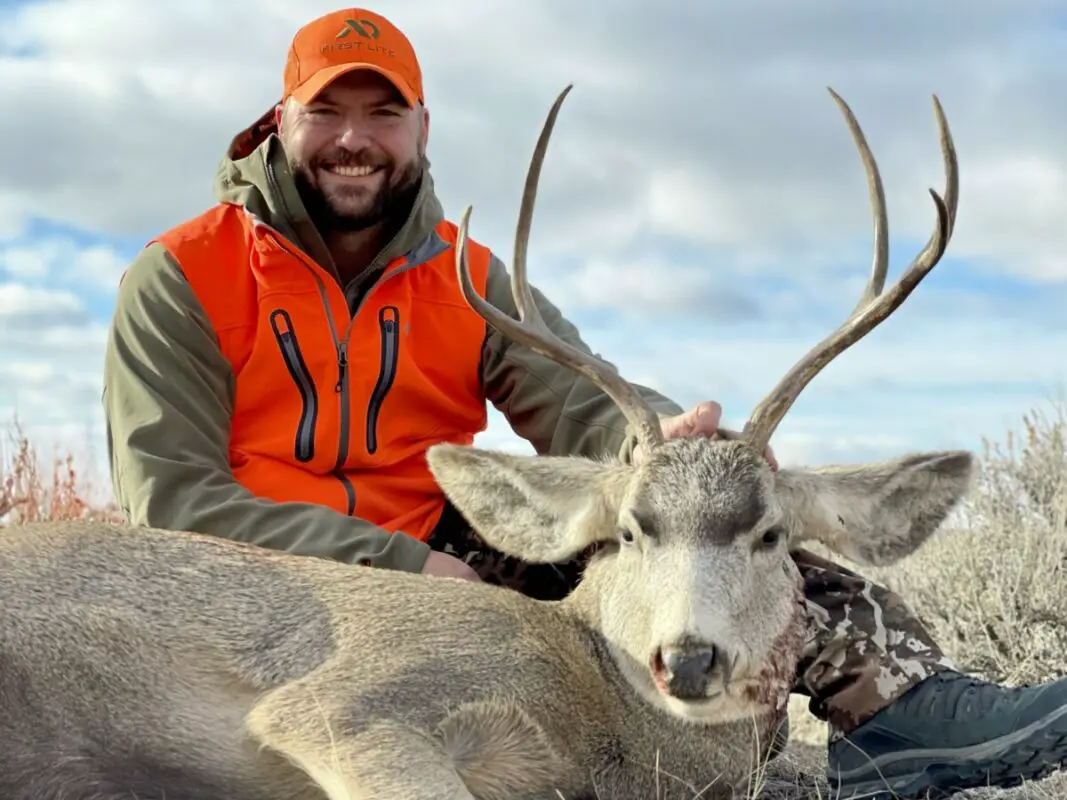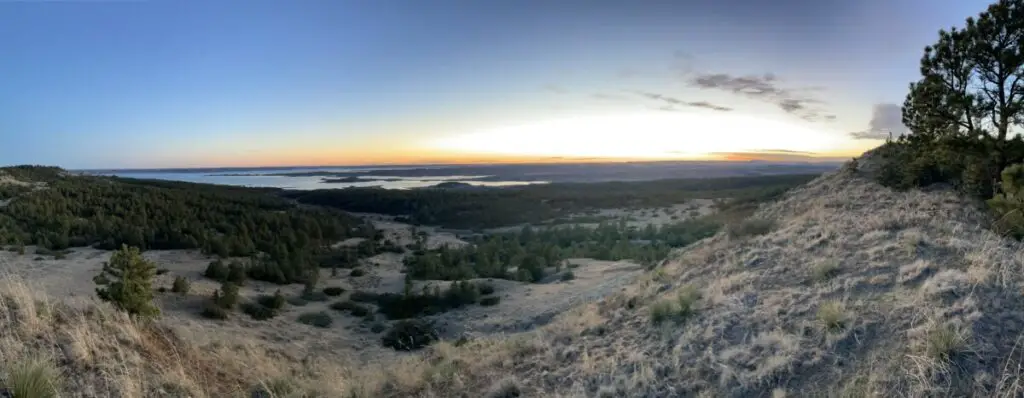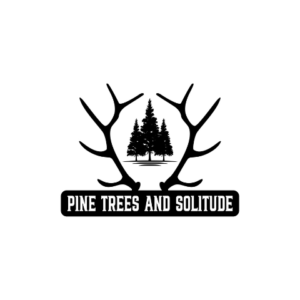
As a kid, hunting out west was for wealthy people in my community. It was a dream that many of us young boys had from the time we could watch VHS tapes or shows on TNN of mule deer and elk hunts. It would not be until nearly 30 years later that we would realize that those dreams could be a reality at an affordable and repeatable cost every year or every other year.
Western hunting is challenging for anyone. However, it is exceptionally intimidating for those unfamiliar with the Western draw system. This article will help bridge the gap between us east of the Mississippi River and anyone else eager to chase those bouncy, long-eared icons of the West: Mule Deer.
Where to go
I love planning travel hunts. It is like detective work to me. “Where are these animals that are 2,000 miles away, and how can I bring one home?”
My first step is to make some phone calls to regional game and fish offices. Montana has seven hunting regions and an office for each one. Their phone numbers are on Montana’s Fish, Wildlife, and Parks (FWP) website. I am looking for regional biologists to determine deer populations in each region, hunting pressure, habitat quality, and anything else that might tell me I can have opportunities at a buck.
I start this process sometimes a year in advance. By the time the hunt gets here, I will have built some rapport with the regional biologists and FWP officers, who are more apt to send pertinent information my way. I do not ask for specific locations of where to find deer, but often, they will gladly offer them on their own.
Choosing the best area to hunt in Montana is entirely up to you. Western Montana offers rugged, picturesque terrain and much public land. Eastern Montana consists of rolling hills, prairies, and coulees with private, public, and Block Management Areas. BMAs are private lands leased by the state for hunting access.
You will also need to start planning a year prior so you can apply for tags in the spring for the following hunting season. Montana’s application period typically begins around March 1st and ends April 1st, with draw results available in mid-April.
We have hunted with general deer tags, which permits us to hunt in most of the state. There are also unit-specific permits, which are limited entry and more challenging to draw but typically have giant trophy-sized deer.
Unsuccessful draw attempts will result in a preference point, essentially an extra chance to draw the next application period. Resources like the FWP website, GoHunt, and OnX are available online to determine draw odds. You must go through the application process regardless of general or limited entry tags.

DIY vs Guided Mule Deer Hunt
I consider three factors before going DIY or guided: time, money, and experience.
If you have plenty of time (7 – 10 days) and experience but on a budget, try DIY.
Go guided if you have the money but lack time or experience.
If you have plenty of experience with western or mule deer hunting but little time or money, you are probably already comfortable with DIY.
Nonresident hunting licenses in Montana cost around $800, including a deer tag. If you are doing DIY, that is the extent of your costs aside from travel, food, and lodging (unless you are camping).
Guided hunts can range from $3800 – $6000 per hunter for 4 – 6 days, including food and lodging. I will not go into what to look for in an outfitter as there are dozens of articles online and in magazines for decades on that exact topic.
Add your licenses and travel out there; it is quite a financial commitment. Then again, what is a possible once-in-a-lifetime hunt worth to you? One of my favorite quotes is, “Someday is not on the calendar.” Hunters are often guilty of waiting too long to make these trips, constantly putting them off for “someday.” Well, “someday,” you will be too old to do this anyway, so get busy livin’.
If it is your first-time western hunting, I highly suggest going with a guide. I did it for my first antelope hunt. It was affordable with a high success rate. The terrain was forgiving as well. While my antelope hunt was in Wyoming, eastern Montana has a similar landscape. It is an excellent option for new or elderly western hunters. Take that into consideration when choosing an area and an outfitter.
Gear for Montana Mule Deer Hunting
Take whatever weapon you are comfortable using. Do not make this trip your first outing with a bow, long-range rifle, or muzzleloader. Use whatever makes you happy, so long as it is legal and can put an animal down ethically.
One of the great things about mule deer is that you can use pretty much any weapon you use for whitetails back home.
(Pinetrees and solitude may earn a commission from affiliate links in this article.)
Your rifle and muzzleloader ammunition can stay the same unless you need to change it for longer shots in the open terrain. Be prepared for shots averaging 400 yards or more. Practice! Practice! Practice! Also, practice shooting from the prone and sitting positions since you will likely be spot and stalk hunting.
Quality optics are a must. It might be a good time to upgrade that scope and binoculars if you regularly head west in the fall. A rangefinder is essential. Judging distance in the open terrain is challenging, especially for novice western hunters.
I will admit to not having much experience with bow hunting, but from what I have heard over the years, it is like rifle hunting as far as practicing longer shots from varying positions like standing, crouching, or on your knees. Again, the rangefinder is your best friend. It is even more crucial to gauge distance in steep terrain due to angle compensation.
Clothing
When you are on the phone with your contacts in Montana, get some info on the possible weather. They will likely tell you to expect anything, and they are right. It could be snowing one day and 80 degrees the next. It could rain. It WILL be windy. All day. Everyday.
You will be walking many miles every day. Wear comfortable, breathable clothes and hiking boots or shoes. For a good reason, Merino wool has taken off in the past several years. It dries quickly, insulates even when wet, and breathes much better than cotton.
Packable insulation, like a puffy jacket, is a fantastic option for cold weather. You can cram it in your pack while hiking and pull it out when you reach a stopping point. Many of your clothing options for a Western trip can come from an outdoor recreation store and online.
Camouflage is optional for rifle hunting. Earth-tone colors will be sufficient. Camo could help some while bow hunting to break up your outline at close range.

Travel and Meat Care
Driving or flying for a hunt takes some logistical planning.
Driving seems simple enough, but consider the fact that it takes a couple of days to get to Montana from almost anywhere in the East. If you drive and plan to camp for the duration of your hunt, I suggest grabbing a hotel for the night between drives. The older I get, the more appreciative I am of a comfy bed and warm shower before a week of camping. Splitting the cost between your hunting companions makes this expense much more tolerable. The same goes for splitting the fuel costs.
Flying is expensive but efficient. You can be anywhere in the country within a day. Essentially, flying will allow a couple more days of hunting instead of driving.
Coolers are essential, obviously, for bringing meat home. After deboning, a decent-sized buck can fill a 90-quart cooler with room for ice. It is a good rule of thumb to plan for 100 quarts of space per animal, and you should have room for ice.
Keeping meat cold starts in the field. Field dressing right away is always best practice, and deboning will make it easier to cool. I like keeping my meat dry with 2.5-gallon zip locks half buried in ice. A couple of blocks of dry ice will help stretch your cubed ice for days. Many grocery stores have dry ice. Do some homework before the trip to have those stores located when needed.
Flying with meat is not as tricky as it sounds. This is where dry ice comes in handy. The airlines do not want a cooler leaking from melting cubed ice. So, if you can freeze your meat with dry ice and keep a few pounds of dry ice in the cooler when flying, there should not be any mess.
You will likely have to pay oversized baggage fees, but it is still significantly cheaper than shipping. A cooler with wheels is life-changing in the airport.
Flying with a rifle is not bad, either. Invest in a quality hard case with holes for padlocks. Wheels are a must for me, too. I remove my bolt, leave it in the case, and thread a cable lock through the action. Most airlines ask that the ammunition be in a factory box, which can be in the rifle case. Even if you reload, stick your shells in any factory box.
The airlines will not check to see if the shells match the packaging. Be patient and courteous at the checked baggage counter. It might take a few extra minutes to check a firearm, so get to the airport plenty early. TSA might also take a few more minutes to scan the case and send you on your way.
Luggage carts are your friend in the airport.
Conclusion
Traveling to hunt is something I look forward to every spring and fall. Spring turkey trips are more leisurely than the fall big game trips. However, the fall trips are worth the extra effort.
Montana is an excellent option for new or veteran western hunters. It is a vast state with many opportunities for DIY enthusiasts or guided hunters. You most likely already have the weapon you would need out there, and your clothing might need modification for the hiking and weather, but it is simpler than you think to take off across the country and pursue those giant, forked-horn muleys.
Start planning now. Make the trip. Make the memories.
Because “someday” is not on the calendar.
If you enjoyed this article, here are some more helpful articles from Pinetrees And Solitude.
- How Much Is A Mule Deer Hunt? Guided vs. DIY
- What You Need For An Idaho Mule Deer Hunt
- Catch Mule Deer While They Are Active
- What Should I Bring Elk Hunting? Idaho List
- Hunting Elk In Timber: Tactics To Even The Odds
(This article was originally published on Pintreesandsolitude.com. If it is now published on any other site, it was done without permission from the copyright owner.)
